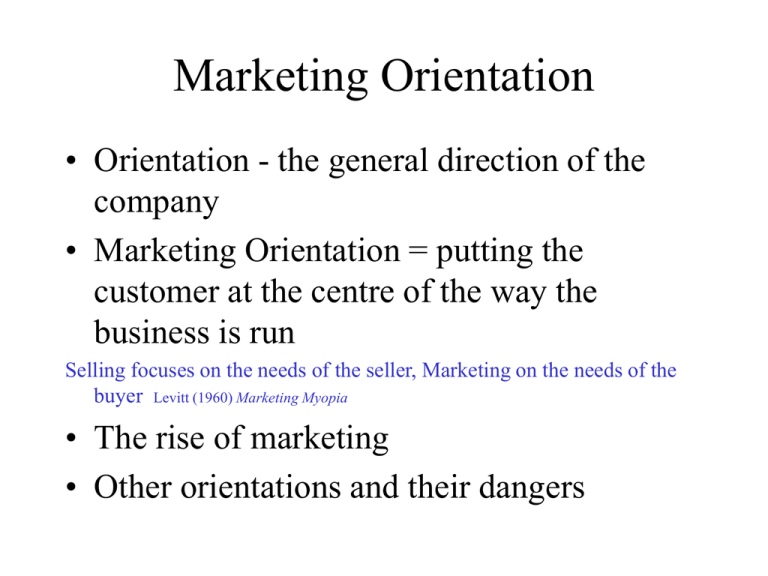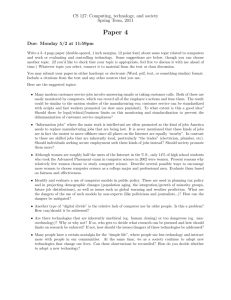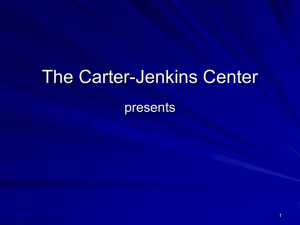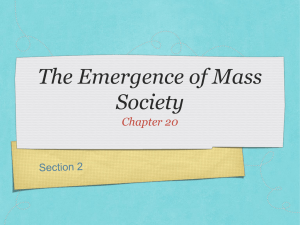The advantages of the marketing orientation
advertisement

Marketing Orientation • Orientation - the general direction of the company • Marketing Orientation = putting the customer at the centre of the way the business is run Selling focuses on the needs of the seller, Marketing on the needs of the buyer Levitt (1960) Marketing Myopia • The rise of marketing • Other orientations and their dangers The rise of marketing The key to success • Craftsmanship, Product quality (> 1800) • Production processes (1800-1920) • Selling techniques (1920s-1950s) • Consumer focus (1950 s >) Post-modern marketing? (2000 >) Product Orientation Believes that • what sells is the quality of the product Concentrates on • product design and technical improvements Dangers • falling in love with the product • ignoring changing customer needs (myopia) The product orientated approach Ideas R&D Design & planning Production or operations ‘Sales and marketing’ Customer The customer orientated approach Customer Market research Product development Production or operations Marketing Communication The whole business seen from the end-user customer’s viewpoint Production or operations orientation Believes that • there is a high level of demand Concentrates on • efficiency and cost effectiveness Dangers • neglects the quality of customer service • inward-looking procedures Sales orientation Believes that • customers need to be persuaded to buy Concentrates on • sales techniques and sales promotions Dangers • selling what we make, not making what will sell • price wars, high pressure selling ->‘cheap and nasty’ image Non-commercial orientation Believes in • public service, political or artistic objectives that are more important than pure profit Dangers • over-dependence on subsidies • remoteness from public, elitist approach • complacency and inefficiency The traditional approach to public sector leisure Social & political objectives ? Customer Needs Provision of leisure facilities Management & operations Sales and Marketing The post Thatcher approach to public sector leisure Social & political objectives Provision of leisure facilities Specified and put out to tender Management & operations ? Customer Needs ‘Compulsory Competitive Tendering’ ‘Best Value’ Sales and Marketing Advantages of marketing orientation • • • • • • Outward looking Responsive to changes in the market Creates loyal customers through good service Adds value rather than cutting profit margins Reduces costs through targeting improves the image of the brand How can you spot a marketing orientated business? • Customer orientation • Competitor Awareness • Interfuctional Coordination Narver and Slater (1990) Criticism of the marketing orientation 1 "We don't ask consumers what they want. They don't know. Instead we apply our brain power to what they need, and will want, and make sure we're there, ready." Akio Morita Sony Corporation Criticism of marketing 2 • Satisfying customers profitably is not the company’s only responsibility: – staff and suppliers – society – the environment ‘Corporate Social Responsibility’ – future generations ‘sustainability’











